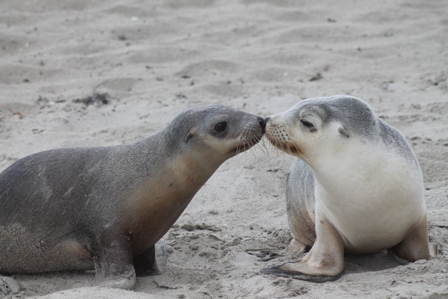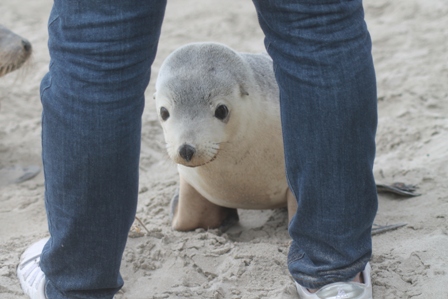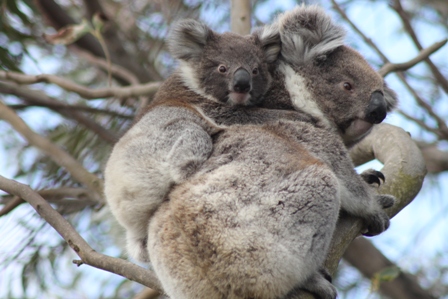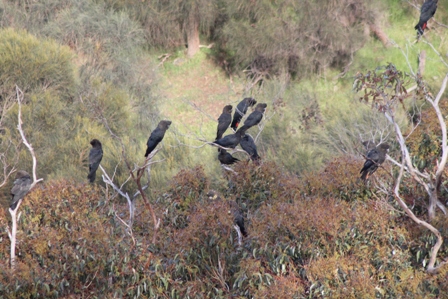10th October 2012
This morning we did the quick hop, appropriately enough, over to Kangaroo Island, off the coast of South Australia. It’s a half hour flight from Adelaide, on one of those excitingly small planes powered by propellers. It turns out that half an hour is all the time you ever need to upset a KI air stewardess; each one of us was chided and chastised during the brief sojourn, either for changing our seat, for carrying too heavy a bag, or for picking our nose. Actually, I made this last one up, but you get the idea.
It has to be admitted that the island does not have a very original name (“What shall we call this place, sport?” – “Dunno, mate, but look at all these roos”), but the truth is that it’s fairly crawling with kangaroos (Western Greys) and Wallabies. More importantly, it is one of the few spots left in Australia that is entirely free of the introduced Red Foxes that have ravaged the fauna elsewhere, so acts as a sanctuary for some species that are uncommon or extinguished on the mainland. It is thus one of Australia’s finest mammal-watching sites.

Australian Sealions, Seal Bay, Kangaroo Island, 10/10/12 (Dominic Couzens)
For us, the first stop was a place called Seal Bay Conservation Park. There’s a clue in the name, but not a very good one, since the animals here are actually Australian Sealions, not seals. The creatures obviously don’t mind being misrepresented, however, because they are incredibly approachable, so that even a photographer of my overall ineptitude can get tolerable pictures. There’s a rule, closely adhered to by the guides, that visitors should not get within 5m of any of the beach’s inhabitants, but nobody told the sealions…

Australian Sealion youngster contemplating what legs are for, Seal Bay, KI, 10/10/12(Dominic Couzens)
There were other goodies on the beach, most notably a pair of Hooded Plovers at the nest. These are rare and localised and decidedly attractive, like Ringed Plovers after an expensive makeover. Another treat was to see both species of Australian oystercatchers standing next to each other, one Sooty Oystercatcher and one Pied Oystercatcher. One of these species is black-and-white and the other one is black all over, and I’ll leave you to work out which is which. Seeing these birds sent the newest member of our press pack, Ray Tipper, recently arrived from Portugal, into raptures. He is a wader nut, you see, and had never set eyes on these species before.

Koalas, Kangaroo Island, South Australia, 10/10/12 (Dominic Couzens)
Our drive to the next location had barely begun when an Australian icon crossed the road, with a baby Australian icon on its back. Kangaroo Island is probably the only place in the world where Koalas are not treated as royalty. They aren’t native but were introduced in the 1920’s from the mainland, and their population has gone through the roof. They do quite a bit of damage to the local blue gums, but try as you might, it’s hard not to look at them goggle-eyed.

Glossy-black Cockatoos, Western River, Kangaroo Island, 10/10/12 (Dominic Couzens)
The afternoon took us to a spot on the north coast of the island where a count of the very rare Glossy-black Cockatoo was to take place. These birds form a very isolated (and endangered) population of subspecies status, numbering just a few hundred birds. Glossy-black Cockatoos have an incredibly limited diet, consisting almost entirely of the seeds of she-oak (Casuarina), which they have for the entree, the main meal and pudding. We met up with an American scientist and a brave, sturdy group of volunteers, who had gathered, shivering, in the pouring wind and bracing wind, to count the birds.
It was at this point that Rob Joliffe first mentioned the word “albatross” and, sure enough, we all managed to scope a few of these exciting birds on the nearby ocean. It turned out that this was the moment Rob’s cover was blown as an obsessive seawatcher. From this point on, he took absolutely every opportunity possible to point his scope in the direction of the ocean, and frequently remained glued there for hours.
We counted over 50 Glossy-blacks.

Good stuff!